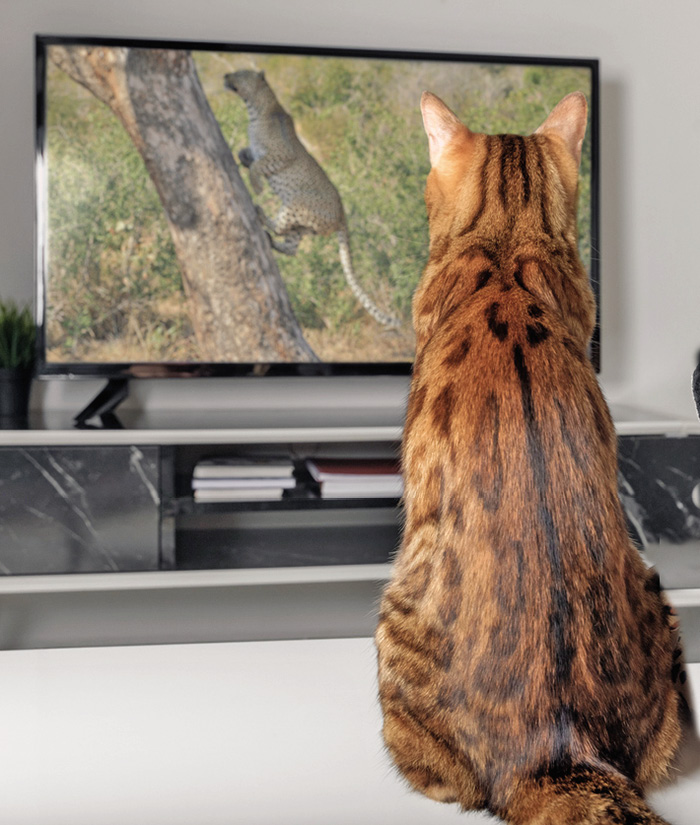There are many solid reasons to make your cat an indoor-only companion, and the Cornell Feline Health Center recommends it. Unfortunately, many people feel bad for their “bored” cat and let them slip outside for some fun. Don’t take that risk! You can provide indoor enrichment for your cat!
We’ve compiled fun things to do with your cat and toys they can use on their own. Only choose cat-safe toys and products, try to rotate games and toys to prevent your cat from becoming bored, and if your cat’s not interested, choose a different game.
Scratchers. Every cat needs a scratching post or board or two. Experiment to see if your cat prefers vertical or horizontal surfaces—maybe both. Switch out textures, giving the cat choices of carpet, rope, and cardboard.
Cat trees. Cats like to climb, and it’s far better to provide a structure than to have them use the drapes. You can choose a simple corner setup with padded branches off a main trunk. Or, you can go more lavish and choose a tree with a bed at the top and unique pathways around the ceiling.
Toys. Rotate toys. Almost every cat can be tempted with some type of toy. A rolling jingle ball. Crumpled up paper. Some cats will retrieve and love a game of fetch. They will at least enjoy chasing the toy. Soft toys they can grab and scratch at and toys stuffed with dried catnip are favorites. Many cats love small stuffed toys (think mouse size) to carry, bat around, or chase if you throw them. A remote-control toy car can be fun, too.
Boxes and bags. Everyone jokes about cats and boxes and paper bags, but cats DO love them. A word of caution: Never use plastic bags or any food bag. Be sure the bag or box cannot shut tightly down and trap your cat inside. A sprinkle of catnip or a couple of your cat’s favorite treats inside may encourage play.
Food games. Many people, and some cats, equate food with love. Make your cat work for his treats. You can toss kibble or small treats down a hall or up or down a set of stairs.
Trick cats. Cats are just as clever as dogs when it comes to learning tricks, but you need to find the motivator for your individual cat. It might be a feather wand toy to play with or it might be real chicken bits. Most people start by luring their cat with the toy or treat. Sit, sit up, shake, and high five are all very easy tricks for a cat to learn. Some cats even learn to spin and roll over. There are many excellent books and videos on trick training for cats. Patience and high value rewards are important.
Cat agility. If you’re ambitious and a good trainer, consider cat agility. You can easily set up a small course indoors with some jumps and tunnels, even a mini teeter. Cats run agility with the use of a wand with a toy or a feather to guide and encourage them. A homemade obstacle course with a reward at the end will get your cat up and moving. You can even expand to competitions held for the serious cat agility teams.
Nose work. Another dog sport that many cats enjoy is scent or nose work. In this case, you pair a sumptuous treat with a cat-safe scent (birch oil is a common starter scent). Once your cat makes the association, you can hide scented cotton swabs in a room or around the house and reward your cat when she finds them. There are training videos online.
Togetherness. Finally, one of the most important ways to bond with and enrich your indoor cat’s life is to simply spend time with her. If she loves grooming, a nightly session on your lap with a slicker might be just the ticket. Or simply sitting on your lap watching TV lets you share time.




